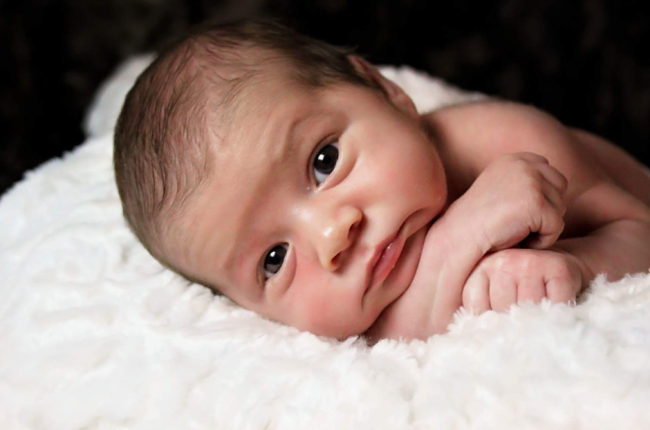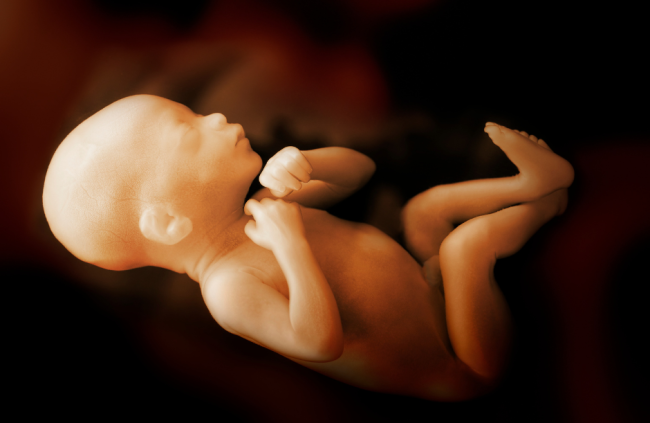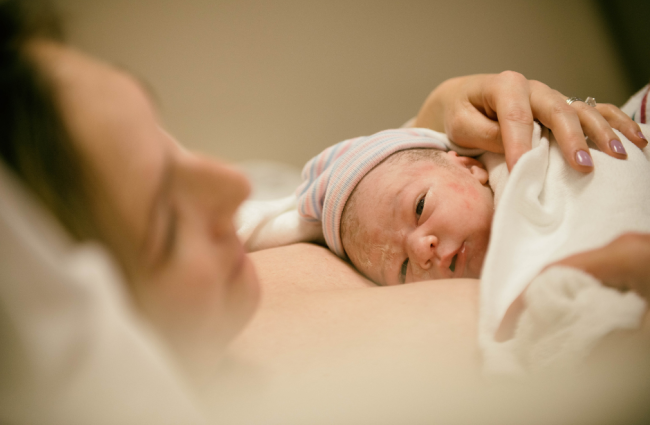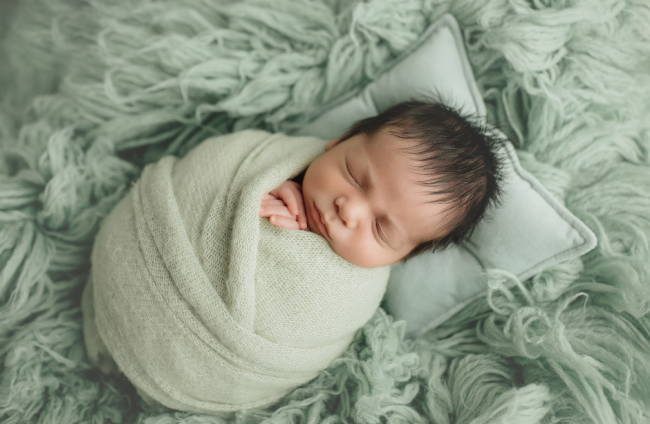What Happens When You Are Born?
Today, we’re traveling back, way back, to the very beginning—our own personal big bang. “What happens when you are born” – is the main question of the day together with what are the odds of you being You on this big Earth. You’ll see you are really unique in that regard. So, let’s find out!

What Happens When You Are Born? The Step-by-Step Journey
You know that cheesy motivational saying? “You are truly unique!” Well, it’s kinda true because before you were the apple of your parent’s eye, your mum and dad had to swipe right on each other.
The Odds of Being Born
Just think about it. There are 8 billion of us on this Earth. Finding each other among the ocean of potential suitors, going steady, tying the knot and deciding to bring a mini-them into the world is something absolutely special.
The process of conception is of course known to us all. Mum and dad have to have sex and then a baby comes into the world. But again, it’s not that simple. It’s a matter of timing, chance and maybe even coincidence.
In a woman’s reproductive cycle, usually lasting between 28 and 35 days, the release of an egg (or ovulation) typically occurs around the 14th to 20th day. This egg, encased in a protective layer, travels from the ovary into the fallopian tube. Out of the 1-2 million egg follicles a female is born with, only around 400 to 500 are ovulated throughout her reproductive life, and only one of those eggs is you.
On the male side, a single ejaculation can contain between 100 million and 500 million sperm. During ejaculation, they’re mixed with seminal fluid, which helps make their way to the egg.
It’s also about timing
When sperm enter the vagina, they’re met with several challenges. The vaginal environment is extremely acidic and inhospitable to sperm. So, not all survive this journey. When they arrive at the cervix, they are encountered with a test. Only the fastest and best will make it through into the uterus. As they move towards the fallopian tubes, their numbers decrease even more, with only a few reaching their destination.

But surprise, the egg isn’t there because it’s not fertile window time. The sperm might bravely hold on for a couple more days, but if ovulation doesn’t happen soon, they’ll eventually die sad and desperate.
Let’s rewind, and this time, the mom and dad got the timing right. The sperm finally reaches the egg and only one brave soldier will breach the egg’s outer layer achieving that coveted union. From here, another journey begins, but your genetic makeup is complete.
What Happens When You Are Born? From a fertilized egg to birth
After the big meeting, the fertilized egg, or zygote, starts growing quickly. It makes a short trip from the fallopian tube to the uterus, arriving there 3 to 4 days after fertilization. But sometimes, the egg might stop and settle in the fallopian tube, which isn’t the right place. This is called an ectopic pregnancy and can be very dangerous for the mother.
In the uterus, the fertilized egg sticks to the lining, a process known as implantation. It’s like the egg finding a comfy spot to rest and grow. The cells keep dividing and multiplying.
About a week into this adventure, a special hormone called human chorionic gonadotropin (hCG) shows up in the mother’s blood. It’s a signal sent by the growing egg to say, “Hey, I’m here!” This hormone is what a pregnancy test looks for to tell if you’re pregnant.
You begin to take form
As the egg settles in, some cells work on forming the placenta, which is like a food delivery system for the growing baby. The other cells form the embryo, which will become the baby. Around the fifth week, a tiny heart begins to beat, and other body parts like the brain and spine start forming too.
By the eighth week, our hero, now called a fetus, has grown bigger and looks more like a tiny person. And it continues to grow, getting ready for the big day of saying hello to the world around 40 weeks later, which is when the baby is ready to be born.

And that’s how, bit by bit, a tiny dot grows into a baby, ready to step into the world. The process is simple yet magical, showing the wonder of life. Let’s now dive into the moment of birth. We’ll look first at how the mother’s body prepares for the big moment, and then we’ll switch perspectives to the baby’s view. That’s your view, if you could ever remember what it was like.
Your mom’s body prepares for giving birth
As the due date approaches, your mom’s body goes through some final preparation for the grand event of welcoming a new life into the world.
First, the mother’s body might have a few practice rounds known as Braxton Hicks contractions. This is like the uterus is doing a warm-up. Though these contractions might feel a bit strange, they usually don’t hurt.
As the day nears, the cervix begins to soften and thin out to create an opening for the baby to make an entrance. This transformation is also connected to the baby moving into position, head down, gearing up for the big day.
The baby begins to cozy up deeper into the pelvis, getting into the right spot for birth. This is also known as “lightening”. Since the baby is no longer pressing on the diaphragm, the mother might feel lighter, breathing easily.
Finally, the sac holding the baby breaks, releasing a flow of water. This act, known as ‘waters breaking’, may happen before or during labor.
What Happens When You Are Born is not like in the movies though
Unlike the flashy on-screen portrayals, labor usually kicks off gently. It officially starts when contractions begin, working to open up the cervix more and more. It’s wise to alert the midwife as the contractions begin, but the future mother should go to the hospital only when they feel more frequent.
Behind the scenes, hormones like oxytocin and relaxin choreograph the contractions and help the cervix soften to make the birth process smoother.
Now we are in the final stage. The contractions guide the baby towards the exit, the bones and muscles in the mother’s pelvis stretch and adjust to create a path.
As little you begins to pitch in, your moldable, soft head changes shape just a bit to fit through.
What Happens When You Are Born as “seen” by you
Ok, now let’s jump into the tiny shoes of baby-you and zoom back to your first few moments in this big, bright world. Although you don’t remember a speck of it, it was a rollercoaster!
Upon entering this world, the first thing on your agenda is breathing. This is a totally new thing for you. All the time you were in the womb, you didn’t really breathe air. Rather, your blood picked up oxygen molecules from the placenta. So, once out, your central nervous system sends a rush order to your lungs to puff up.
And voila! Your first big cry. Crying is good as it also helps clear any fluid that might have remained on your respiratory tract. So, your lungs are working, but your liver can take more time to start up all the important jobs including breaking down waste products such as bilirubin. This could lead to an excess of bilirubin in the blood. That will manifest as a yellowing of the skin and eyes known as jaundice.
In fact, statistics show a 60% chance of getting infant jaundice if you’re a full-term baby, and an 80% chance if you arrive ahead of schedule. But it’s fine. You’re an oddly cute little thing anyways.
Your transition from a fluid-residing being to an air-breathing terrestrial creature also means your skin must acclimate to its new habitat. Fresh out of the womb, you’re draped in amniotic fluid, blood, and a gooey white substance called “vernix.” The vernix served as a shield during your long journey in the womb. So, it’s normal for your skin to crack and peel as you now begin to adjust to your new life.
What do you see?
Ok, now your lungs are working, your liver is also getting there. But what’s happening with your eyes? What’s your visual scoop? Not a lot, really. While your eyes are being bombarded with visual stimuli, distinguishing between objects is not in your skill set just yet. Depth perception, the ability to see in 3D, is on hold. You’ll start tracking objects with your eyes a few months down the road and fully step into a three-dimensional world around 5 months. So no, you won’t witness dad passing out in the delivery room.
If all checks out, your first heartwarming skin-to-skin encounter with mom awaits. The OB places you on your mother’s bare chest or stomach shortly after arrival, covering both of you with a blanket. It’s a significant first meeting with your nurturing guardian. This close contact helps stabilize your heartbeat, breathing, and body temperature, sparks your interest in feeding, and nurtures the mother-child bond. Shortly thereafter, the OB clamps the umbilical cord, leaving behind a stump that will naturally dry up and fall off in a few weeks.

It’s cold outside

Your body temperature now begins to dip. While nestled in the womb, warmth was a given, and excess heat dispersed through your skin, amniotic fluid, and mom’s uterine wall. However, now, your petite body has to generate its own warmth, primarily by burning brown fat, a fat type unique to newborns. Your caregivers also chip in, with offerings like hats, sweaters, or little booties. Keeping you warm and dry is crucial, as shivering isn’t part of a newborn’s repertoire, not yet. Moreover, skin-to-skin contact is both comforting and useful in keeping you warm. So, you’ll spend a lot of time close to your mom.
Your poop is unusual
Prior to your grand entrance into this world, mom’s placenta was the conduit for all necessary nutrients, while simultaneously filtering out waste. However, during the third trimester, some waste begins to accumulate in your digestive tract, alongside shed skin cells, gastrointestinal tract cells, mucous, amniotic fluid, and even hair. Post birth, expelling this accumulated waste, known as meconium, is on your immediate agenda. Meconium, characterized by its black, tarry consistency and lack of odor, is unlike your forthcoming bowel movements. Usually, within three to five days post birth, you’ll transition from passing meconium to excreting waste from the nutrients you consume orally.
You have to pump up your immune system
So far, your stay in mom’s womb was akin to residing in a luxurious, protective haven, shielding you from a multitude of germ-induced threats from the outside world. The downside, however, is that your antibody arsenal is still under construction.
Lucky for you, some of mom’s lifetime-accumulated antibodies have already been transferred via the placenta, and if breastfeeding is on the menu, more antibodies are on the way. Breastfed or not, the antibody transfer grants your immune system a nice kickoff, helping it fend off numerous disease culprits effectively. However, it’s just the beginning, and your immune system has a long journey ahead, especially during your early years.
Your digestive system kicks off
Moreover, while in utero, your digestive system was in the developmental phase, but functionality was on pause. Upon your arrival, it promptly takes charge of nutrient intake, digestion, and waste elimination.
However, in the womb’s relatively sterile confines, your intestinal flora was limited to what you encountered via mom. Research indicates that your gut microbiome begins its colonization journey at birth, influenced by the maternal microbes you’re exposed to—mainly vaginal and fecal microbes if you’re delivered vaginally – or skin, mouth, and environmental microbes if you’re delivered via cesarean.
So now, little hero, your journey into the world begins!
